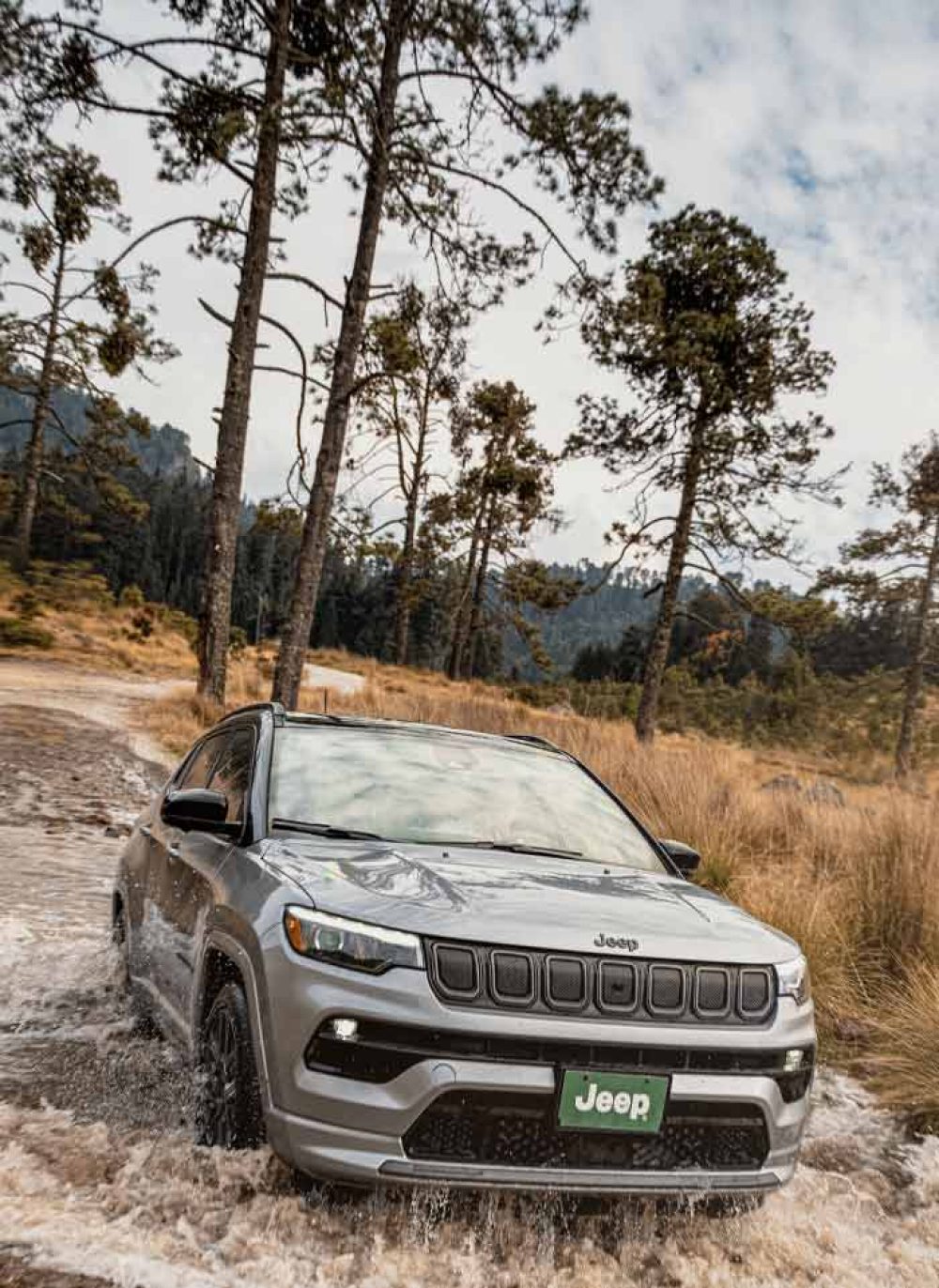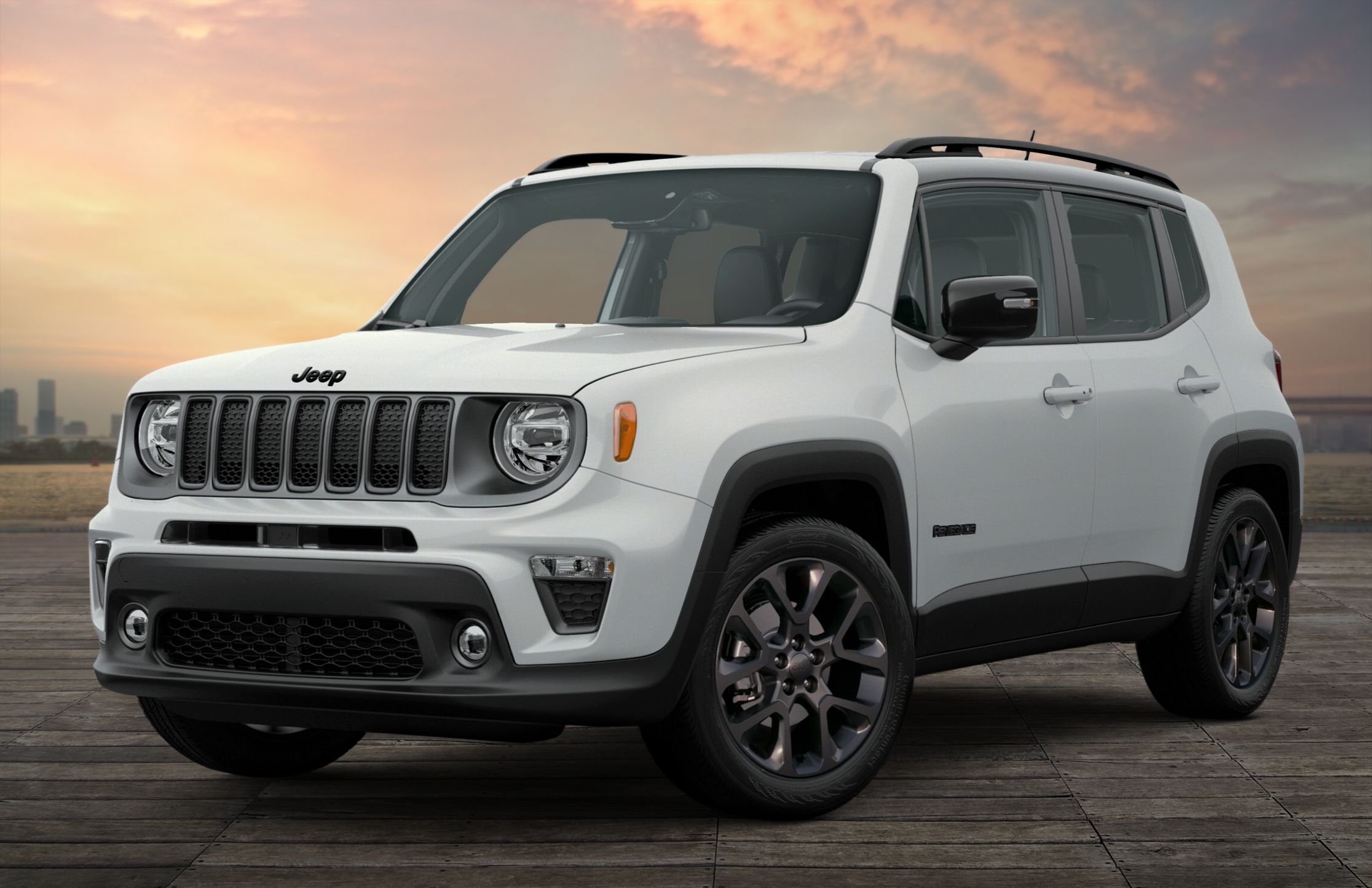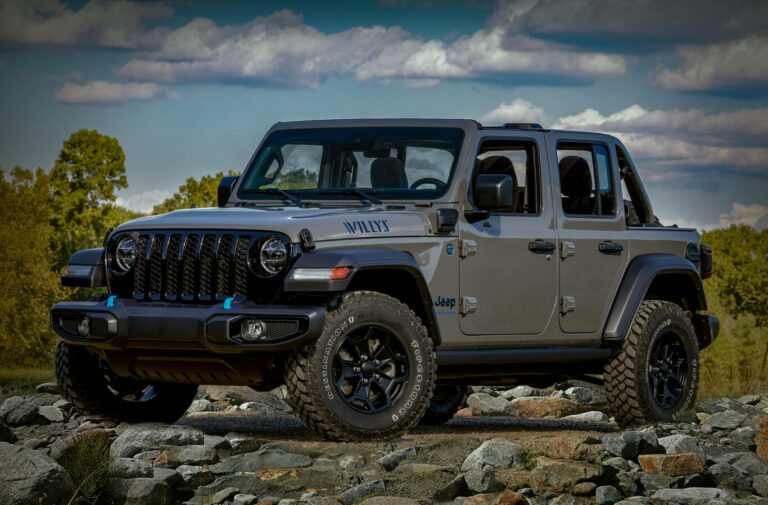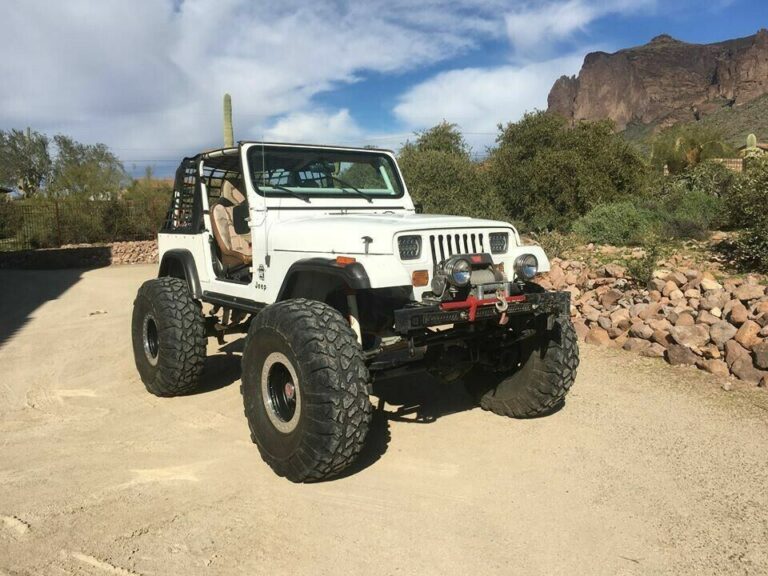Jeep TJ Tub For Sale: Your Ultimate Guide to Replacement and Restoration
Jeep TJ Tub For Sale: Your Ultimate Guide to Replacement and Restoration jeeps.truckstrend.com
The iconic Jeep Wrangler TJ (1997-2006) holds a special place in the hearts of off-road enthusiasts and casual drivers alike. Known for its robust build, legendary off-road capability, and timeless design, the TJ remains a highly sought-after vehicle. However, like any vehicle of its age, the TJ is susceptible to the relentless march of time, and perhaps its most common adversary is rust. The body tub – the main structure of the Jeep that houses the interior, seats, and attaches to the frame – is particularly vulnerable to corrosion, especially in areas exposed to road salt, moisture, and mud.
This is where the concept of "Jeep TJ Tub For Sale" becomes incredibly relevant. Whether you’re battling extensive rust, repairing accident damage, or embarking on a custom build or complete restoration, finding a suitable replacement tub can breathe new life into your beloved TJ. This comprehensive guide will delve into every aspect of purchasing, preparing, and installing a new or used Jeep TJ tub, providing you with the knowledge and practical advice needed to navigate this significant project.
Jeep TJ Tub For Sale: Your Ultimate Guide to Replacement and Restoration
Why Buy a Replacement TJ Tub? The Driving Reasons
Investing in a replacement tub for your Jeep TJ isn’t a decision taken lightly, but it’s often a necessary one for several compelling reasons:
- Rust Repair: This is, by far, the most common reason. TJs are notorious for rust in key areas like the floorboards, rocker panels, rear wheel wells, and even the body mounts. While small patches can be repaired, widespread or structural rust compromises safety and integrity, making a full tub replacement the most durable solution.
- Accident Damage: A severe collision can deform the tub beyond repair, even if the frame remains straight. Replacing the tub allows for a complete structural refresh without scrapping the entire vehicle.
- Custom Builds and Restorations: For enthusiasts undertaking a frame-off restoration or building a highly customized rig, starting with a clean, solid tub provides the perfect foundation. It allows for modifications like stretch kits, half-cab conversions, or integrating custom roll cages with ease.
- Salvage Title or Donor Vehicle: Sometimes, a complete Jeep with a solid tub but a damaged powertrain or frame can be acquired cheaply. Salvaging the tub for another project is a cost-effective way to get a good base.
- Longevity and Resale Value: A rust-free, structurally sound tub significantly extends the life of your TJ and substantially increases its resale value, making the investment worthwhile in the long run.

Types of TJ Tubs Available: A Spectrum of Choices
When searching for a "Jeep TJ Tub For Sale," you’ll encounter various options, each with its own set of pros and cons regarding cost, quality, and availability.
- Used/Salvage Tubs: These are tubs pulled from donor vehicles.

- Pros: Often the most affordable option. Can sometimes be found locally. Original factory steel.
- Cons: Condition varies wildly. Prone to hidden rust, dents, or previous repairs. Requires thorough inspection. May not include all components (dash, wiring, etc.).
- New Aftermarket Steel Tubs: Manufactured by third-party companies, these are direct replacements for the OEM tub.

- Pros: Brand new, rust-free, and often E-coated for superior rust prevention. Direct fit, minimizing fabrication.
- Cons: More expensive than used tubs. Quality can vary between manufacturers. May require minor drilling or modification for perfect alignment.
- New Aftermarket Aluminum Tubs: A premium option offered by a few specialized manufacturers.
- Pros: Extremely lightweight, significantly reducing overall vehicle weight. Completely rust-proof. High strength-to-weight ratio.
- Cons: Most expensive option. Requires specialized welding if repairs are ever needed. Can be prone to dents if hit hard due to aluminum’s malleability compared to steel.
- New OEM (Original Equipment Manufacturer) Tubs: Tubs manufactured by Jeep/Chrysler.
- Pros: Exact factory fit and finish. Highest quality standards.
- Cons: Extremely rare to find new. If available, they are prohibitively expensive and often special order only.
What to Look for When Buying a TJ Tub: A Critical Checklist
Thorough inspection is paramount, especially when considering a used tub. A few hours of careful scrutiny can save you hundreds, if not thousands, in future repairs.
- Rust Hotspots: Pay close attention to common rust areas:
- Floorboards: Especially under the carpet, near the seat mounts, and where the floor meets the rocker panels.
- Rocker Panels: Both inner and outer. Look for bubbling paint, holes, or previous patch jobs.
- Body Mounts: Where the tub bolts to the frame. These are critical structural points.
- Rear Wheel Wells/Inner Fenders: Check for rust from road debris and moisture accumulation.
- Tailgate Opening: The bottom lip and corners are common rust points.
- Structural Integrity:
- Straightness: Look for any signs of twisting, bowing, or significant dents that might indicate accident damage.
- Seams and Welds: Ensure factory seams are intact and free from separation or amateur welding repairs.
- Completeness:
- Does it come with the firewall, windshield frame mounts, dash support, and inner fenders?
- Are the door openings straight and true?
- Are there any included components like the dash, wiring harness, or heater box? These can be a significant bonus.
- Donor Vehicle Information (for used tubs): If possible, get details about the vehicle it came from. Was it a rollover? Front-end collision? This can provide clues about potential hidden damage.
- Title Status (if buying a whole vehicle for the tub): If you’re purchasing a complete donor Jeep, ensure you understand its title status (salvage, clear, etc.) and how that might impact registration if you ever consider using its VIN.
The Process of Replacing a TJ Tub: A High-Level Guide
Replacing a TJ tub is a significant undertaking that requires mechanical aptitude, proper tools, and patience. It’s not a weekend project for the novice, but it’s certainly achievable for a dedicated DIYer or with professional assistance.
- Preparation:
- Documentation: Take countless photos and videos during disassembly. Label everything.
- Tools: You’ll need a comprehensive set of hand tools, sockets, wrenches, a floor jack, jack stands, an engine hoist (optional but helpful), and potentially a welder.
- Space: A clean, well-lit garage or workshop with ample space is crucial.
- Disassembly:
- Strip the Interior: Remove seats, carpet, dash, center console, and any interior trim.
- Disconnect Components: Carefully disconnect the wiring harness, steering column, brake lines, fuel lines, and anything else attached to the tub from the frame or engine.
- Remove Exterior Components: Fenders, hood, grille, windshield frame, doors, roll bar, and tailgate.
- Body Mounts: Unbolt all body mounts connecting the tub to the frame.
- Tub Removal:
- With everything disconnected, carefully lift the old tub off the frame. This usually requires several strong helpers or an engine hoist with a lifting sling.
- Frame Inspection and Prep:
- While the frame is exposed, inspect it thoroughly for rust or damage. Clean, sand, and paint the frame if desired.
- Replace any worn body mount bushings.
- New Tub Installation:
- Carefully lower the new tub onto the frame, aligning it with the body mounts.
- Bolt the tub securely to the frame, ensuring proper torque.
- Reassembly:
- Reverse the disassembly process, reconnecting all components, wiring, and lines.
- Install the exterior panels, roll bar, and interior.
- Consider painting the new tub before or after installation, depending on your preference and the tub’s finish.
- Final Checks: Double-check all connections, fluid levels, and ensure everything is properly secured before driving.
Important Considerations & Potential Challenges
- Cost: Beyond the tub itself, factor in shipping, body mount kits, new hardware, paint, and potentially new components (fenders, inner fenders, etc.) if your old ones are too rusty.
- Labor: This is a labor-intensive project. If you’re paying a shop, expect significant labor costs.
- Skills Required: Basic mechanical skills are a must. Experience with wiring, brake lines, and general automotive disassembly/assembly will be highly beneficial.
- Hidden Issues: Even with thorough inspection, used tubs can hide rust or previous repairs that only become apparent during prep or painting.
- VIN Transfer (If Swapping a VIN): If you’re transferring your original TJ’s VIN to a new tub (which may be necessary if the original VIN plate is on the old tub and you want to keep the vehicle legally registered as your original Jeep), check your local state or country laws carefully. Some jurisdictions have strict rules about VIN plate removal or body swaps, requiring inspections or special procedures. It’s often simpler to keep the original VIN plate on the firewall intact if possible.
Tips for a Successful Purchase & Installation
- Research Reputable Sellers/Manufacturers: For new aftermarket tubs, read reviews and choose a company known for quality and good fitment.
- Inspect, Inspect, Inspect: Never buy a used tub sight unseen if possible. If buying remotely, demand high-resolution photos and videos of all angles, especially rust-prone areas.
- Budget Wisely: Create a detailed budget that includes the tub, shipping, consumables (bolts, clips, sealants), paint, and any unexpected items. Add a contingency fund.
- Get Help: This project is much easier and safer with an extra set of hands.
- Safety First: Use proper lifting equipment, wear safety glasses, and ensure your workspace is safe and organized.
- Consider Professional Help: If you’re unsure about any aspect, don’t hesitate to consult or hire a professional shop, especially for critical steps like wiring or brake line connections.
Price Table: Representative Costs for Jeep TJ Tubs
Please note: Prices are highly variable based on condition, location, shipping costs, and included components. This table provides a general estimate.
| Tub Type/Condition | Estimated Price Range (USD) | Common Inclusions | Notes |
|---|---|---|---|
| Used/Damaged | $300 – $800 | Bare tub, significant rust/damage | Suitable for cutting out patch panels or major reconstruction. Inspect very carefully. Shipping can exceed tub cost. |
| Used/Fair Condition | $800 – $1,800 | Bare tub, moderate surface rust, minor dents | Good candidate for sandblasting and minor bodywork. Best value if you can find one locally. |
| Used/Good Condition | $1,800 – $3,000 | Bare tub, minimal rust, straight | Ready for prep and paint. May include some interior mounts. Hard to find. |
| New Aftermarket Steel | $3,000 – $5,000 | E-coated bare tub (some may include windshield frame mounts) | Excellent option for a complete refresh. Often requires separate purchase of inner fenders, dash support, etc. Check manufacturer’s exact inclusions. |
| New Aftermarket Aluminum | $5,500 – $8,000+ | Bare tub, often with integrated firewall components | Premium, lightweight, rust-proof option. Significant investment but offers superior performance and longevity. |
| New OEM (Rare) | $7,000 – $10,000+ | Varies | Extremely rare. Usually special order from dealers if available at all. Primarily for show vehicles or purist restorations. |
- Additional Costs to Consider: Shipping ($300-$1000+), paint ($500-$3000+ depending on quality/labor), body mount kit ($100-$300), new hardware, sealants, potentially new fenders/grille/hood if not included or damaged.
Frequently Asked Questions (FAQ) about Jeep TJ Tubs
Q1: Is replacing a TJ tub a DIY project?
A1: For someone with solid mechanical skills, a good set of tools, and a suitable workspace, yes, it can be a DIY project. However, it’s a very time-consuming and labor-intensive undertaking. If you’re new to major automotive work, consider professional help or at least have an experienced friend guide you.
Q2: How long does a tub replacement typically take?
A2: For an experienced DIYer working weekends, it could take 2-4 weeks. A professional shop might complete it in 1-2 weeks, depending on their schedule and the extent of additional work (like painting). Unexpected issues can always extend the timeline.
Q3: Do I need special tools to replace the tub?
A3: Beyond standard mechanics’ tools (sockets, wrenches, screwdrivers), you’ll likely need a floor jack, jack stands, an engine hoist or suitable lifting equipment, and potentially a welder if your tub needs minor repairs or modifications. A torque wrench is essential for critical fasteners.
Q4: What about the VIN? Is it on the tub?
A4: Yes, the VIN plate on a TJ is typically located on the firewall of the tub, visible through the windshield. If you replace the tub, you’ll need to carefully consider how to handle the VIN. In most cases, you would not transfer the VIN plate from the old tub to the new one. Instead, you’d retain your original Jeep’s VIN and ensure the new tub doesn’t have a visible VIN that conflicts. Check your local DMV/motor vehicle department for specific regulations regarding body swaps and VINs, as laws vary significantly by state/country.
Q5: Is it worth buying an aluminum tub for a TJ?
A5: An aluminum tub is a significant investment but offers substantial benefits. It’s completely rust-proof and significantly lighter, improving performance, fuel economy (marginally), and reducing wear on suspension components. If you plan to keep your TJ long-term, off-road aggressively, or want the ultimate rust solution, it’s definitely worth considering if your budget allows.
Q6: Can I swap a YJ tub onto a TJ frame?
A6: While possible, it’s not a direct bolt-on. The YJ (square headlight) and TJ (round headlight) frames and body mounts differ. It would require significant fabrication, welding, and modification of both the frame and the tub to make it fit correctly. It’s a project for advanced fabricators.
Conclusion
Finding a "Jeep TJ Tub For Sale" can be the turning point for a rusted-out classic or the perfect starting block for a dream build. While it’s a project that demands time, effort, and a careful budget, the reward is a revitalized Jeep TJ that’s ready for many more years of adventures. By understanding the types of tubs available, knowing what to look for, and approaching the installation with a clear plan and the right resources, you can successfully navigate this challenging yet incredibly rewarding endeavor, ensuring your iconic TJ continues to conquer trails and turn heads for generations to come.




